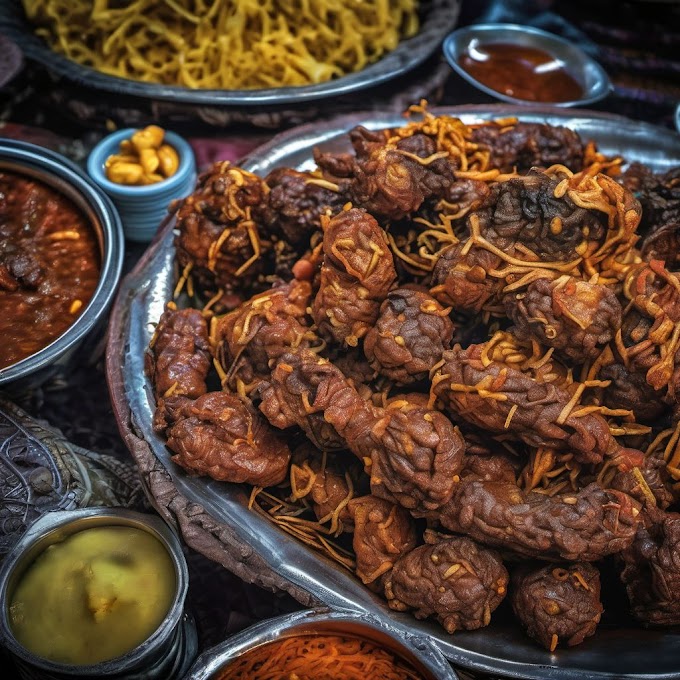


Japanese desserts, known for their delicate flavors, elegant presentations, and meticulous craftsmanship, are a reflection of Japan's culture, history, and seasonal influences. With a deep-rooted appreciation for simplicity, balance, and natural ingredients, Japanese sweets, or "wagashi," have a distinct place in the culinary world. Let's delve into an extensive exploration of Japanese desserts, each carrying its own unique charm and cultural significance.
1. **Wagashi**:
Wagashi, a term encompassing various Japanese sweets, is an art form in itself. These traditional confections are made with simple, natural ingredients like sweet red bean paste (anko), glutinous rice flour (mochiko), and sugar. Wagashi come in diverse shapes, colors, and textures, often reflecting the changing seasons and cultural symbolism.
2. **Mochi**:
Mochi, a fundamental ingredient in many Japanese desserts, is a sticky rice cake made from glutinous rice. It can be filled with sweet red bean paste (anko), covered in powdered soybean flour (kinako), or flavored with various ingredients. Mochi is often used to create colorful and playful confections.
3. **Daifuku**:
Daifuku is a popular mochi-based sweet filled with sweet red bean paste (anko). The mochi is wrapped around the filling, creating a delightful, chewy exterior. Variations include using white bean paste, seasonal fruits, or even ice cream as fillings.
4. **Sakuramochi**:
Sakuramochi is a delicate, pink-colored mochi filled with sweet red bean paste and wrapped in a pickled cherry blossom leaf. It's a seasonal delicacy typically enjoyed during the springtime, celebrating the arrival of cherry blossoms.
5. **Taiyaki**:
Taiyaki are fish-shaped cakes made from a batter similar to waffle or pancake batter and filled with sweet red bean paste, custard, or chocolate. The fish shape is both playful and charming, making it a favorite street food and dessert.
6. **Yokan**:
Yokan is a jelly-like dessert made from red bean paste, agar-agar, and sugar. It is often flavored with matcha (green tea) or yomogi (Japanese mugwort). Yokan is sliced into blocks or squares and enjoyed as a delightful sweet treat.
7. **Dorayaki**:
Dorayaki consists of two pancake-like sponge cakes sandwiching a sweet red bean paste filling. Its soft and slightly chewy texture, coupled with the earthy flavor of red bean, makes it a beloved dessert, often enjoyed with a cup of green tea.
8. **Matcha**:
Matcha, powdered green tea, is a staple in Japanese desserts. It's used to flavor various sweets like matcha mochi, matcha ice cream, and matcha-flavored cakes. The bitter-sweet taste and vibrant green color make it a distinctive ingredient in Japanese cuisine.
9. **Anmitsu**:
Anmitsu is a delightful dessert featuring cubes of agar jelly, sweet red bean paste, fruits, and a drizzle of black sugar syrup called "kuromitsu." It's a refreshing and colorful dessert, often enjoyed during the warmer months.
10. **Kakigori**:
Kakigori is a shaved ice dessert topped with flavored syrup and condensed milk. Common flavors include strawberry, melon, matcha, and azuki (sweet red bean). It's a popular choice to beat the summer heat in Japan.
11. **Castella**:
Castella is a sponge cake made with sugar, flour, eggs, and starch syrup. It has a dense yet moist texture and a sweet, slightly caramelized flavor. Originally introduced by Portuguese traders, castella has become a staple Japanese dessert.
12. **Hōtō**:
Hōtō is a traditional noodle dish from the Yamanashi Prefecture, but it's also prepared in dessert form. The noodles are often sweetened and combined with ingredients like sweet red bean paste and mochi balls, creating a unique and satisfying sweet soup.
13. **Manjū**:
Manjū are steamed buns filled with sweet red bean paste, fruit preserves, or custard. The outer dough can vary in texture, from soft and fluffy to slightly chewy, depending on the regional variation.
14. **Warabi Mochi**:
Warabi mochi is a jelly-like dessert made from bracken starch, water, and sugar. It's typically dusted with kinako (soybean flour) and served with kuromitsu syrup. The delicate texture and subtle sweetness make it a sought-after delicacy.
Modern Interpretations:
The global fascination with Japanese culture has led to the fusion of traditional Japanese desserts with modern culinary trends. Chefs and dessert enthusiasts worldwide often infuse Japanese flavors and techniques into their creations. Innovative interpretations such as matcha-flavored desserts, sushi-inspired sweets, and mochi ice cream have gained widespread popularity.
Accessibility and Availability:
Japanese desserts are no longer limited to Japan; they are widely accessible across the globe. Japanese confectionery shops, both traditional and modern, have expanded internationally, making it easier for people to indulge in authentic Japanese sweets without leaving their own countries.
Seasonal and Festive Treats:
Japan's deep connection to the seasons is reflected in its desserts. Seasonal fruits, flowers, and flavors are often incorporated into sweets. For example, cherry blossom-themed treats in spring and yuzu-flavored desserts in winter celebrate the beauty and essence of each season.
Cultural Experience and Tourism:
Japanese desserts have become a cultural experience for tourists visiting Japan and a gateway for those exploring Japanese culture. Participating in tea ceremonies, visiting wagashi shops, and tasting an array of traditional sweets provide a glimpse into Japan's culinary heritage.
Japanese desserts are an exquisite blend of artistry, flavor, and cultural symbolism. Each sweet reflects the nuanced seasons and celebrates Japan's natural beauty. Whether it's the chewy delight of mochi, the subtle bitterness of matcha, or the elegance of wagashi, Japanese desserts offer a profound exploration of taste, tradition, and the pursuit of beauty in simplicity.





%20(1).png)

